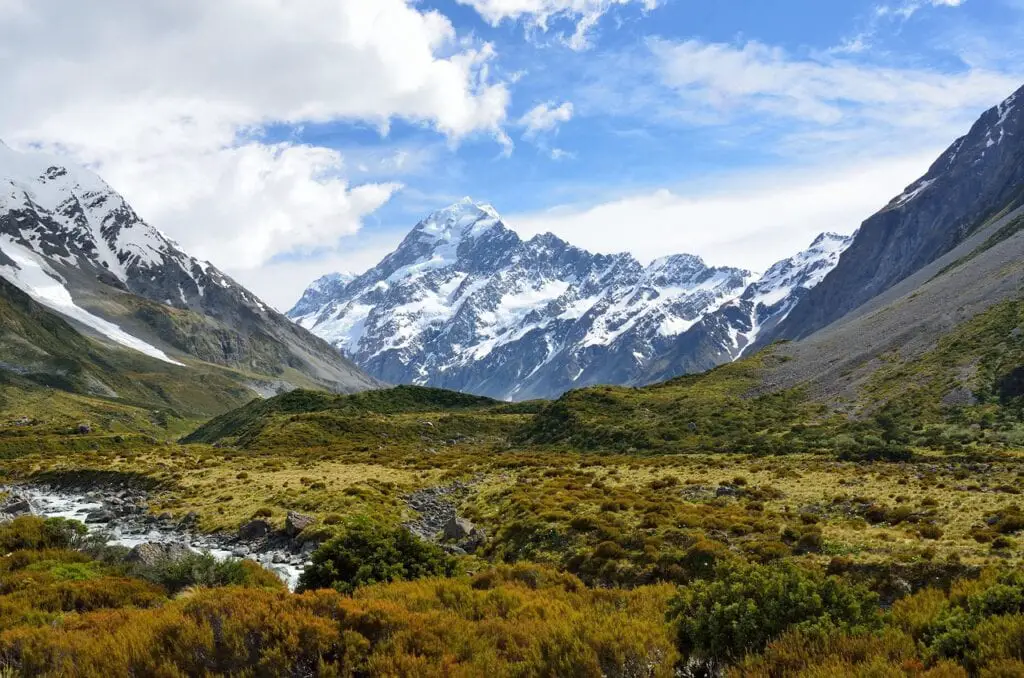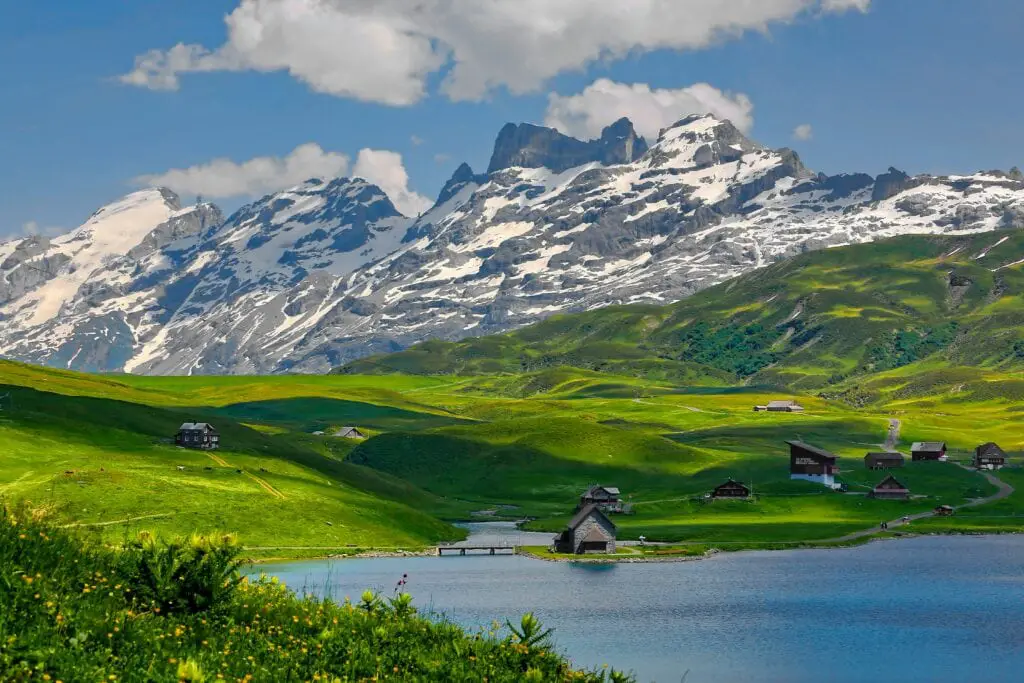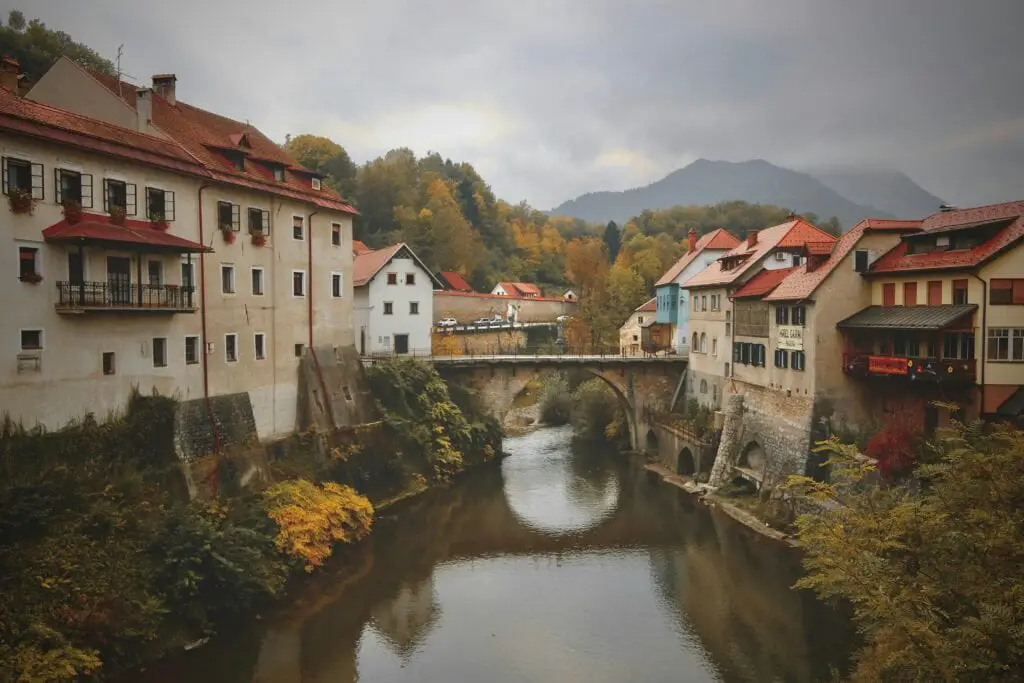Travelers today are paying closer attention to their impact on the environment. More people choose destinations that protect nature and support local cultures.
Eco travel and green tourism let visitors explore the world while reducing harm and helping communities thrive. These travel choices focus on smaller carbon footprints, clean energy, and respect for wildlife.
Sustainable destinations around the globe make it easier to travel responsibly. Places like Costa Rica, Singapore, and countries in Europe offer unique experiences that balance adventure with respect for the planet.
Many destinations get recognized for their efforts, from banning single-use plastics to using renewable energy and protecting habitats. The options for eco-friendly trips keep growing, from staying at eco-lodges to joining tours focused on conservation.
People who want to travel in a more mindful way can find plenty of ideas for trips that are fun and meaningful. There are so many ways to travel that are good for the Earth.
Key Takeaways
- Eco travel reduces impact and supports local people.
- Many destinations lead with green initiatives and activities.
- Responsible tourism benefits nature and communities alike.

Core Principles of Eco Travel and Green Tourism
Eco-friendly travel and green tourism focus on protecting natural environments. Travelers reduce waste and support the well-being of local people.
These approaches help preserve biodiversity and cultural heritage for future generations. Responsible choices really do add up.
Definition and Importance
Eco travel, or eco-tourism, means visiting natural areas in a way that conserves the environment and improves local people’s lives. Green tourism covers any tourism practice that tries to minimize negative environmental impacts.
Sustainable tourism is a broader idea. It looks at the effect of travel on communities, wildlife, and resources.
Responsible travel encourages thoughtful decisions so travelers don’t harm places they visit. Eco-friendly destinations aim to protect habitats and species while involving communities in tourism planning.
This makes sustainable travel vital for conservation. It helps keep destinations healthy and enjoyable.
Key Sustainability Practices
Travelers can pick eco-friendly lodging that uses solar panels, recycles waste, or limits water use. Supporting local businesses cuts the carbon footprint since goods and services don’t have to travel far.
Common sustainable practices include:
- Using reusable water bottles and bags
- Choosing public transportation or biking instead of driving
- Avoiding single-use plastics
- Respecting wildlife and natural spaces
Green tourism businesses often highlight conservation and waste reduction. Tourists who “slow travel” spend longer at a destination, which lowers harmful emissions.
If you want more details, check out Eco-Friendly Practices in Tourism.
Benefits for Local Communities
Community-based tourism puts local people first. Residents help make decisions and share in the benefits from tourism activities.
Travelers spending money at local markets and staying in family-run hotels supports local economies and jobs. Eco-tourism can provide new income for communities and encourage pride in their culture.
It often funds schools, health care, or conservation work when managed well. Supporting local businesses also preserves traditional skills and crafts.
Involving communities in sustainable tourism builds trust and better relationships. This creates a positive impact for everyone. Read about how this approach helps at What Is Ecotourism And Its Principles.
Reducing Your Carbon Footprint
One main goal of eco travel is cutting down carbon emissions. Air travel produces lots of greenhouse gases, so travelers can choose trains or buses when possible.
Staying closer to home and picking direct flights are helpful too. Using less energy at hotels—like turning off lights and air conditioning when leaving—also matters.
Opting for walking tours or biking further reduces negative impacts. Eating more plant-based meals, recycling, and buying carbon offsets can help.
Responsible travel is about making better choices every step of the way. For more tips, see the guide on eco-friendly practices in tourism.

Sustainable Destinations Worldwide
Many countries set an example in eco travel through strong conservation strategies and resource management. Community engagement, protected areas, and sustainable infrastructure help limit tourism’s impact and preserve unique natural and cultural assets.
Costa Rica: Biodiversity and Protected Areas
Costa Rica leads the world with its commitment to biodiversity. About 25% of its land is protected as national parks, wildlife refuges, and private reserves.
The Monteverde Cloud Forest is famed for its misty trails, rare orchids, and hundreds of bird species. Sea turtle conservation projects run along both Caribbean and Pacific coasts.
These programs protect endangered turtles and often let travelers join release events. Sustainable lodges here use solar energy, recycle waste, and support local communities.
Eco travelers can take canopy tours, hike volcano trails, and visit small farms. Costa Rica’s strict environmental laws and focus on renewable energy support its reputation as a premier green tourism destination.
Those seeking an in-depth look can find Costa Rica listed among the best eco-friendly travel destinations.
Iceland: Geothermal Energy and Pristine Landscapes
Iceland sets a standard in renewable energy—almost 100% of its electricity comes from geothermal and hydro power. This small island nation features hot springs, volcanoes, glaciers, and black-sand beaches.
Pristine landscapes dominate, with plenty of hiking opportunities and minimal pollution. Sustainable tourism activities include visiting geothermal pools, taking guided Northern Lights tours, and joining whale-watching excursions from coastal towns.
Strict regulations limit the number of visitors to delicate sites. Local businesses take steps to reduce carbon emissions by optimizing transport and minimizing single-use plastics.
Many visitor centers and hotels are heated with geothermal energy. Iceland’s focus on environmental stewardship and clean energy make it a leader in sustainable travel.
New Zealand: Conservation and National Parks
New Zealand is known for its vast national parks and dramatic scenery. Fiordland National Park stands out with its glacier-carved fjords, ancient rainforests, and rare wildlife species.
The Department of Conservation works to maintain trails and protect large areas from development. Many wildlife sanctuaries on offshore islands protect native birds such as kiwi and takahē.
The country’s “Tiaki Promise” encourages visitors to care for people, place, and culture while traveling. Sustainable tour operators offer guided hikes, birdwatching, and marine wildlife tours with minimal environmental impact.
Eco-friendly accommodations and visitor initiatives limit plastic waste and promote water conservation. Travelers appreciate New Zealand’s transparent sustainability policies and access to protected natural environments.
Bhutan: Carbon-Negative Himalayan Kingdom
Bhutan measures national success by Gross National Happiness, prioritizing well-being and environmental preservation over economic growth. The kingdom is famous for its forested mountains, vibrant festivals, and strong cultural identity.
Most of its land remains forested, absorbing more carbon than the country emits and making Bhutan one of the world’s only carbon-negative nations. Tourists pay a daily fee that supports conservation and community projects, reducing overtourism and providing local benefits.
Strict controls protect sensitive wildlife like snow leopards and red pandas. Hiking routes such as the Snowman Trek offer stunning views of the eastern Himalayas with minimal ecological footprint.
Responsible tourism is central to Bhutan’s approach to green tourism.
Norway: Fjords and Electric Ferries
Norway is best known for its deep fjords, forested valleys, and clean ocean air. It invests heavily in sustainable infrastructure like electric ferries, which reduce emissions along popular fjord routes such as Geiranger and Nærøyfjord.
National parks and UNESCO sites limit development and manage visitor numbers to safeguard pristine landscapes. Outdoor activities include kayaking, glacier walks, and wildlife watching for reindeer and puffins.
Cities like Oslo set ambitious climate targets and promote cycling and public transport. Many hotels use renewable energy, and eco-certification is common for tour operators.
Norway’s blend of natural beauty and advanced green technology makes it a standout in sustainable travel among global destinations.

Eco-Friendly Destinations in Europe
Several places across Europe make it easy for travelers to enjoy sustainable holidays. These destinations stand out for their efforts in green tourism, eco-friendly transportation, strong cycling cultures, and community-driven energy solutions.
Slovenia: Green Tourism Leadership
Slovenia is a leading example in green tourism. Its capital, Ljubljana, is known as one of the greenest cities in Europe, having won awards for its clean streets and pedestrian-friendly zones.
The country encourages low-impact travel with its extensive public transport system, electric taxis, and wide bicycle lanes. Many hotels and guesthouses here are recognized for eco-friendly practices, such as using local products and renewable energy.
Travelers can enjoy Lake Bohinj and Triglav National Park, where hiking trails are well marked and nature is protected. Slovenia’s Green Scheme rates towns and accommodations to guide tourists to the most sustainable choices.
The result is that visitors find it simpler to support local and eco-responsible businesses. Learn more about Slovenia’s commitment to green tourism.
Switzerland: Sustainable Transportation and Green Hotels
Switzerland has built its reputation on clean public transportation and eco-friendly accommodations. Its trains use mostly renewable energy and connect even small mountain villages.
Car-free travel is easy across the country. Many towns offer free or discounted public transport for tourists.
Swiss hotels often follow strict environmental guidelines, such as energy-saving designs and local sourcing of food. Some regions like Zermatt are almost completely car-free.
In cities like Zurich and Geneva, bike rental programs help cut emissions and make it easy to get around. Switzerland’s combination of green hotels, clear air, and easy access to nature makes it a top choice for travelers looking for sustainable transport and accommodations.
Finland: Cycling, Hiking, and Forest Preservation
Finland is famous for its forests, lakes, and clean cities. It preserves nature through strict environmental laws and large protected areas.
Cycling is common in cities such as Helsinki, which features hundreds of kilometers of dedicated bike lanes. Finland also encourages visitors to hike in the country’s national parks and nature reserves, where trails are well kept and respect for wildlife is encouraged.
Eco-lodges and local guesthouses offer sustainable stays. The country values the “Everyman’s Right,” which lets everyone enjoy wild spaces responsibly.
Sustainable activities here include birdwatching, camping, and foraging, often guided by locals who really care about the environment.
Scotland and the Isle of Eigg: Community Initiatives and Green Energy
Scotland leads in grassroots sustainability projects, with the Isle of Eigg as a standout model. The island is owned by a community trust, which runs its own renewable energy grid.
Almost all electricity on Eigg comes from wind, sun, and water. Residents and guests are careful to use only what they need.
Visitors are encouraged to support local farms and businesses, which follow eco-friendly practices. Across Scotland, travelers can explore green-certified hotels, wildlife tours, and low-impact hiking trails.
Community-run projects and green energy are found in both rural regions and city centers. Local involvement really does make a difference. Learn more about community renewable energy on the Isle of Eigg.

Eco Lodging and Sustainable Activities
Eco travel is built on careful choices about where to stay, what to do, and how to get around. Making smart decisions supports nature and local communities while letting travelers experience new places responsibly.
Eco-Lodges and Green Accommodations
Eco-lodges and other green accommodations aim to protect the environment and support local economies. Many places use sustainable building materials and energy-efficient lighting.
They often install water-saving systems. Some invest in renewable energy like solar panels or wind turbines.
Guests might notice recycling bins and reusable amenities, such as cloth towels instead of paper ones. These small changes add up over time.
A simple checklist for picking a sustainable stay:
- Look for certifications like LEED, Green Key, or Green Globe.
- See if the accommodation supports local community projects.
- Ask about water and energy-saving policies.
For more tips, this guide on green accommodations breaks down how to spot truly eco-friendly places.
Low-Impact Activities: Hiking, Trekking, and Wildlife Watching
Low-impact activities like hiking and wildlife watching help limit harm to the environment. These usually stick to marked trails to avoid damaging plants and animal habitats.
Eco travel spots encourage visitors to follow Leave No Trace, pack out trash, and respect wildlife. These habits make a difference.
Travelers can join guided walks, take wildlife photos from a distance, and use binoculars instead of getting too close. National parks and reserves often provide maps with info about local species.
Sustainable Transportation Options
Transportation choices really affect a trip’s carbon footprint. Using sustainable options like buses, trains, car shares, or even bikes helps cut pollution.
Cycling is getting more popular in many cities, and rentals or bike tours are easy to find. Some places even run public transit on renewable energy.
Planning routes that cut out unnecessary flights and picking direct trips also help. Guides like this on sustainable travel options offer more advice for picking the best way to get around.

Supporting Conservation and Local Communities
Eco-friendly travel isn’t just about seeing pretty places. It’s a way to protect wildlife, support local economies, and keep unique cultures alive.
Wildlife Conservation Projects
More travelers now join hands-on wildlife conservation projects to help endangered species and restore habitats. Volunteers can work on animal rescue, habitat restoration, or wildlife monitoring.
People might feed animals, plant native trees, or collect data on species. Some groups offer training and even certificates for your efforts.
Projects like these let travelers make a direct impact on species survival and habitat health. This work helps not just animals, but also local people who rely on healthy ecosystems.
For more info on wildlife-focused volunteer work, check out global conservation projects.
Community-Based Tourism Initiatives
Community-based tourism puts benefits directly in local hands. Booking homestays, hiring local guides, and buying crafts from artisans keep money in the community.
This approach creates jobs, supports women’s cooperatives, and funds education or conservation. Family-run accommodations and restaurants can boost household incomes and reduce dependence on harmful industries.
Cultural experiences—like workshops and cooking classes—also help preserve traditions. See how community-run experiences help both locals and travelers.
Preserving Biodiversity for Future Generations
Tourism can hurt natural areas, but sustainable travel protects biodiversity for the future. Staying in eco-certified lodges and supporting local conservation projects protects important species.
Protected areas and national parks rely on visitor fees for rangers and restoration. Low-impact activities like guided hikes or birdwatching keep habitats safe.
Buying locally made, eco-friendly products links conservation, local business, and education. Learn more about the role of sustainable tourism in preserving biodiversity.

Responsible Tourism Practices for Travelers
Travelers can make a real difference by planning trips that reduce environmental harm, support local economies, and respect cultures. Focusing on waste reduction and minimizing your carbon footprint can lead to more meaningful travel.
Choosing Low-Impact Destinations
Picking destinations that prioritize sustainability helps protect nature and support locals. Many eco-tourism spots are certified for green practices, like protected areas or community-led projects.
Choosing places that limit visitor numbers or promote conservation reduces the risk of overcrowding. Public transportation, cycling, and walking are often encouraged in these places, lowering pollution and traffic.
Visiting in the off-season or avoiding crowded spots also supports responsible tourism. Many destinations now offer sustainability ratings and certifications to help guide your choices.
Minimizing Waste and Energy Use
Cutting down on waste is a big part of sustainable tourism. Bringing reusable bottles, bags, and containers instead of single-use plastics keeps trash out of landfills.
Eco-friendly accommodations usually offer recycling and composting. Travelers can look for hotels or lodges with clear green policies.
Energy use matters too. Turning off lights, air conditioning, and electronics when not needed saves power in hotels.
Choosing carbon-neutral transportation like trains, buses, or electric vehicles can shrink your trip’s carbon footprint. Travelers can also join carbon offset programs to help balance out emissions from flights or long drives.
Helpful tips for minimizing impact:
| Action | Impact |
|---|---|
| Use reusables | Less trash |
| Choose green lodging | Lower energy/water usage |
| Walk/public transport | Decrease air pollution |
Respecting Cultures and Environments
Responsible tourism means respecting local cultures, customs, and natural places. Learning a few words in the local language, dressing modestly, and following customs goes a long way.
It’s important to avoid loud noise or trespassing in sacred spots. Supporting local businesses—like markets, guides, and artisans—makes sure tourism helps the community.
Travelers shouldn’t disturb wildlife or take natural objects like stones or plants. Choosing ethical animal experiences and staying on marked trails helps protect fragile habitats.
If possible, support community-led tourism and conservation to help preserve cultural and natural heritage for the benefit of future generations.

Frequently Asked Questions
Sustainable tourism relies on clear standards, community involvement, and support for the environment and economy. Travelers can make a difference by making smart choices and seeking out truly eco-friendly places.
What are the key factors that define a sustainable tourism destination?
A sustainable tourism destination is built on strong environmental protections. These places support conservation, cut waste, and use resources wisely.
Carbon-friendly transportation and renewable energy are often priorities. Social and economic factors matter too—destinations work with local communities and encourage respect for culture.
Policies to limit overcrowding and avoid stressing resources are usually in place. More details are in this explanation of sustainable tourism fundamentals.
How can travelers contribute to the sustainability of the places they visit?
Travelers help by choosing eco-friendly transportation like trains or buses over flights when possible. Staying in green accommodations and bringing reusable bottles or bags cuts down on waste.
Buying from local shops and eating at local restaurants supports the economy and keeps traditions alive. Respecting environmental guidelines, like staying on trails, also matters.
More tips for responsible travel can be found in this eco tourism FAQ guide.
What are some examples of successful eco-friendly travel initiatives?
Costa Rica has set aside nearly 30% of its land as protected areas, making eco-tourism a big part of the national economy. Wildlife watching and park visits are managed to protect resources.
Local lodges often run on renewable energy and work closely with communities. In Kenya, community-run conservancies have reduced poaching and improved local incomes by welcoming responsible visitors.
Which certifications should travelers look for when choosing a green destination?
Certifications help travelers spot real green options. Look for labels like Green Key, EarthCheck, and Rainforest Alliance.
These mean the site meets strict environmental and social standards. Certified places should be able to explain what they do for local people and ecosystems.
You’ll find more info on these certifications in lists of sustainable tourism practices.
How does sustainable travel impact local communities economically and environmentally?
Sustainable travel boosts local economies by creating jobs and business opportunities tied to nature and culture. Revenue from eco-tourism helps fund schools, healthcare, and community projects.
It also reduces pollution, cuts resource use, and helps protect habitats. Eco-tourism encourages locals to get involved in conservation, as seen in many community-based initiatives.
What are the top-ranked destinations known for their effective eco-tourism practices?
Costa Rica stands out as a world leader. The country protects its rainforests and invests in eco-lodges, all while keeping sustainability front and center.
Norway puts a lot of effort into managing its natural areas. They also offer green transport options, which is honestly pretty impressive.
New Zealand makes responsible wildlife viewing a priority. The country has also put solid marine protections in place.
You’ll find that Kenya and Vietnam have gone for community-based wildlife tours. These programs help both nature and local residents.
If you’re curious, you can dive deeper with this guide to eco-friendly travel.
You Might Also Like:
If you enjoyed this post on Eco-Friendly Travel: Where to Go Now, you might also like: How to Backpack Across Asia Like a Pro, See the World on a Budget: Insider Tips and Tricks for Affordable Travel, Top Foodie Destinations You Need to Visit Now
